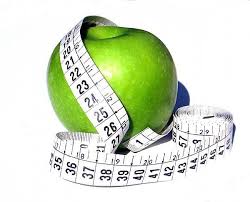The general definition to calories is given as
Unit of Heat Energy.
The energy needed to raise the temperature of 1 gram of water through 1 °C (now usually defined as 4.1868 joules).
The energy needed to raise the temperature of 1 KG(kilogram) of water through 1 °C, equal to one thousand small calories and often used to measure the energy value of foods.

Source:http://www.beginnertriathlete.com/cms/article-detail.asp?articleid=130
If you are looking for ONLINE CALORIE counter click here
Nutrition facts of Mango

Nutrirition facts of Yogurt:
Nutrition facts of Mushrooms:

Unit of Heat Energy.
The energy needed to raise the temperature of 1 gram of water through 1 °C (now usually defined as 4.1868 joules).
The energy needed to raise the temperature of 1 KG(kilogram) of water through 1 °C, equal to one thousand small calories and often used to measure the energy value of foods.
We all know "Fat" provides energy to the body. Alcohol is not a nutrient, but it also provide energy when metabolized by the body. In addition to providing energy carbohydrate, protein and fat build have other roles in building and maintaining body tissues and regulating body functions. Vitamins, minerals and water do not provide energy.
Calories are a measure of the amount of energy provided from food. Fats provide nine calories per gram, and carbohydrates and proteins provide four calories per gram. Alcohol provides seven calories per gram. The amount of energy a food provides depends on how much carbohydrate, far and protein in contains. Most foods contain all three of these nutrients, as well as vitamins, minerals, water and other compounds.
Individuals have different calorie needs.An average men requires 2500 calories per day and average women 2000 calories per day. Someone who usually sticks to the desk for 6 to 8 hours per day would need more calories if they were physically active on the weekends.
Calorie balance occurs when calories IN TAKE= calories OUT SPEND. If calories IN >calories OUT, weight gain occurs. If calories IN < OUT, weight loss occurs. There are approximately 3,500 calories in one pound of body fat.

Estimating Daily Calorie Needs
1. Estimate basal metabolism calorie needs
a. Women
Calories are a measure of the amount of energy provided from food. Fats provide nine calories per gram, and carbohydrates and proteins provide four calories per gram. Alcohol provides seven calories per gram. The amount of energy a food provides depends on how much carbohydrate, far and protein in contains. Most foods contain all three of these nutrients, as well as vitamins, minerals, water and other compounds.
Individuals have different calorie needs.An average men requires 2500 calories per day and average women 2000 calories per day. Someone who usually sticks to the desk for 6 to 8 hours per day would need more calories if they were physically active on the weekends.
Calorie balance occurs when calories IN TAKE= calories OUT SPEND. If calories IN >calories OUT, weight gain occurs. If calories IN < OUT, weight loss occurs. There are approximately 3,500 calories in one pound of body fat.
Estimating Daily Calorie Needs
1. Estimate basal metabolism calorie needs
a. Women
weight in pounds X 10 = basal metabolism calories
b. Men
weight in pounds X 11 =basal metabolism calories
2. Estimate physical activity calorie needs,
b. Men
weight in pounds X 11 =basal metabolism calories
2. Estimate physical activity calorie needs,
Intensity level Physical Activity Factor
Very Light 20% (0.20)
Light 30% (0.30)
Moderate 40% (0.40)
Heavy 50% (0.50)
Total basal metabolism calories = physical activity calories X amount of physical activity factor (%) = total physical activity calorie needs
3. Estimate calories needs for basal metabolism and physical activity
number of basal metabolism calories
+ number of physical activity calories
= total calories needs
4. Estimate calories for digestion and metabolism of food= amount of calorie needs X 10%(.10) = Total amount of digestion and metabolism calories
5. Estimate total calorie needs =basal metabolism calories +amount of physical activity calories + amount of digestion and metabolism calorie = Total amount of Calorie Needs
Very Light 20% (0.20)
Light 30% (0.30)
Moderate 40% (0.40)
Heavy 50% (0.50)
Total basal metabolism calories = physical activity calories X amount of physical activity factor (%) = total physical activity calorie needs
3. Estimate calories needs for basal metabolism and physical activity
number of basal metabolism calories
+ number of physical activity calories
= total calories needs
4. Estimate calories for digestion and metabolism of food= amount of calorie needs X 10%(.10) = Total amount of digestion and metabolism calories
5. Estimate total calorie needs =basal metabolism calories +amount of physical activity calories + amount of digestion and metabolism calorie = Total amount of Calorie Needs

Source:http://www.beginnertriathlete.com/cms/article-detail.asp?articleid=130
If you are looking for ONLINE CALORIE counter click here
Nutrition facts of Mango

Nutrirition facts of Yogurt:
Nutrition facts of Mushrooms:

